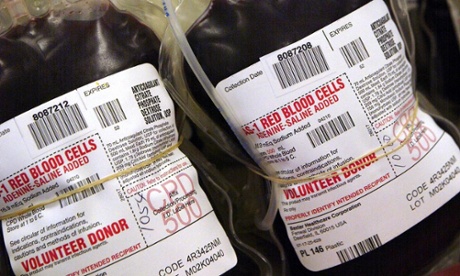The place do excellent products come from? Are they driven by a breathtaking engineering advance, that suddenly permits you to remedy a variety of troubles in radical information methods, or do them come from listening closely to customers, figuring out precisely what they really want, and developing some thing exquisitely fit for objective?
For several – particularly in the academy – building radically new science or potent new technologies looks like the most essential path to health-related progress: figuring out what triggers cancer, or diabetes, or Alzheimer’s illness would most likely reveal crucial therapeutic options in every of these critical locations.
But reaching a scientific breakthrough or establishing a cool engineering doesn’t assure a valuable application will inevitably emerge.
In many circumstances, disappointed innovators and entrepreneurs belatedly learn that, as VC Dave McClure typically puts it (usually much more colorfully), “your solution is not my dilemma.”
Many wonderful concepts never go anywhere numerous large-potential startups fail because their resolution, although stylish, can not be matched to a problem somebody desires to fix.
I saw this vividly nearly a decade in the past, when I was asked to weigh in on a startup that created an remarkable drug delivery engineering, but could by no means figure out what medicine to in fact put in the device – they couldn’t figure out the killer app, so to speak. It was a resolution in search of a difficulty, and it by no means located traction.
Much more just lately, I noticed this in the context of a new solution a big information startup was striving to promote even though the technological innovation was really mindblowing, the advantages the business was touting — such as a turnaround time of months vs days — didn’t resonate, due to the fact incumbent vendors supplied equivalent companies. The new solution almost certainly had important differentiating functions, just not the ones the organization was selling.
Digital health entrepreneurs seem to be specifically vulnerable to this, frequently building classy technological offerings without having contemplating whether or not it solves a dilemma for which a client is ready to spend. Innovators banking on the imminent arrival of value-primarily based care may possibly be particularly likely to find themselves in an awkward and uncomfortable scenario.
The require to much better recognize clients is also an important theme of Phil Rosenzweig’s just published Left Brain Proper Things (my current WSJ review right here). Rosenzweig explores why CEOs generally disregard decision analysis, and concludes that the highly managed conditions of experimental social science translate poorly to the true-globe, higher-stakes choices senior executives confront. The solutions in this spot do not successfully talk to executives’ issues, major the writer to suggest researchers need to develop a greater comprehending of these messy complexities if they aspire to supply far more appropriate options.
An critical, perhaps inadequately appreciated example of the need for customer discovery comes from the pharmaceutical business, exactly where long and extremely uncertain merchandise growth cycles, mixed with a quickly changing external surroundings, has resulted in an abundance of clinical stage compounds that have grow to be efficiently stranded as the marketplace has altered. Medication that have been initially created below 1 set of situations – with the goal of creating an enhanced hypertension drug, say, or a better diabetes drug – now seem to be much less exciting, leading the organizations that produced them to appear earnestly for new potential indications they are options in search of issues, and they are exceptionally frequent across the industry.
In response to the recurrent “your resolution is not my problem” challenge, many silicon valley specialists have been pushing an method that places far much more emphasis on customer want.
Ideo’s Kelley brothers, for instance, in their fantastic Innovative Self-assurance, continually emphasize human factors, the significance of “getting at people’s motivations and core beliefs,” and “deeply understanding human needs” – normally by going out and speaking to men and women and figuring out what these needs are.
Similarly, entrepreneurship guru Steve Blank has urged innovators to emphasis on client development, a priority he sophisticated in a latest program close to life science entrepreneurship he organized at UCSF and meticulously documented on his site.
Intriguingly, during his course, Blank asserted that customer growth represents a crucial missing hyperlink in translational study, as a lot of would-be innovators have a remarkably bad knowing of the consumers they are making an attempt to serve (articulated nicely in this Burrill Report podcast as well). Throughout Blank’s program, group right after group of entrepreneurs had been startled by what they identified when they started to speak to customers, interactions that led numerous to revise their approaches dramatically.
Significantly, neither the Kelleys nor Blank are advocating customer advancement as a stand-alone technique, and each explicitly emphasize the worth of innovative engineering. Their level is basically that if you want to be certain your technology is going to be beneficial to clients, you better place some hard work into thinking about who your clients actually are, and what they really want.
Great suggestions, of course – but what do you do when the moment has passed, when you’ve presently developed a promising solution, a powerful engineering, and risk-free new medication, some thing you feel has acquired to be helpful to somebody, someplace, but have no concept where the worth lies? How do you connect merchandise with need?
Regrettably, that is a issue in search of a answer.
Healthcare Entrepreneurs Learn Essential Lesson From The Valley: Your Answer Is Not My Problem



 The H&E score leaves Senate Republicans with lots of choices
The H&E score leaves Senate Republicans with lots of choices


